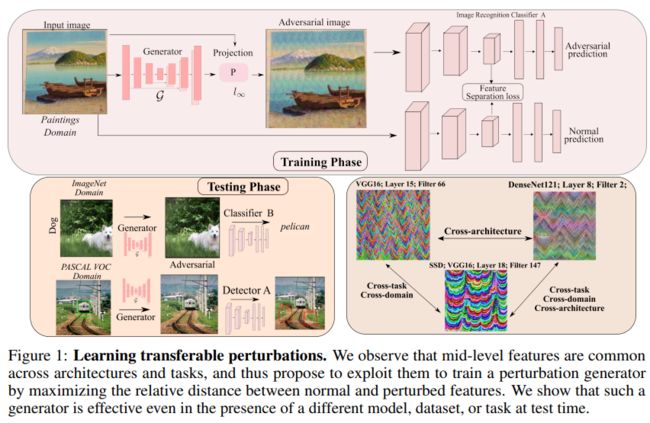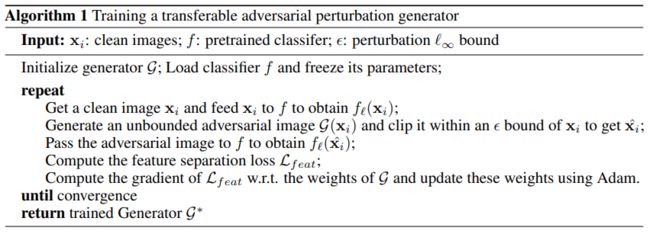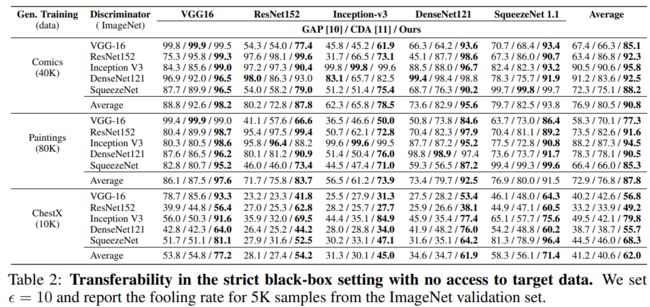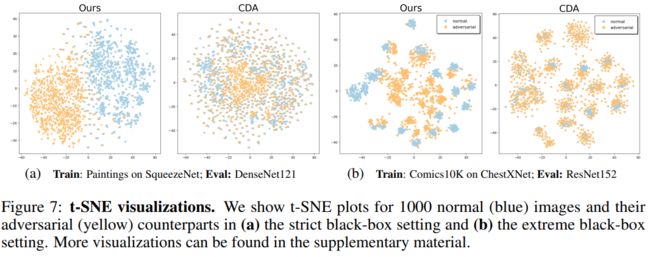- YOLOv8重磅升级:引入DenseOne密集网络革新主干设计,重塑YOLO目标检测性能新高度
程序员杨弋
YOLO目标检测人工智能
随着深度学习技术的不断进步,目标检测作为计算机视觉领域的重要任务之一,其性能和应用范围也在不断扩大。作为目标检测领域的佼佼者,YOLO(YouOnlyLookOnce)系列算法以其出色的性能和实时性受到了广泛关注。而最近提出的YOLOv8更是在前代版本的基础上进行了多项优化,进一步提升了检测精度和速度。然而,尽管YOLOv8已经取得了显著的进步,但在处理复杂场景和遮挡问题时,仍然存在一定的挑战。为
- 深度学习驱动的极端天气预测:时空数据异常检测与应用全解析(基于Python + TensorFlow)
AI_DL_CODE
深度学习pythontensorflow人工智能天气预测
摘要:时空数据异常检测在气象领域识别偏离正常模式的数据点,对极端天气预测至关重要。深度学习,尤其是LSTM网络,因其强大的特征学习能力在该领域显示出巨大潜力。通过整合多源气象数据,深度学习模型能够自动挖掘复杂模式和非线性关系,提高预测准确性。然而,挑战依然存在,包括数据质量问题、模型可解释性不足以及极端天气的内在复杂性和不确定性。未来,通过模型架构创新、训练算法优化以及探索深度学习在气候预测、气象
- 基于深度学习的人脸表情识别系统:YOLOv5 + YOLOv8 + YOLOv10 + UI界面 + 数据集
2025年数学建模美赛
深度学习YOLOui分类人工智能
引言随着人工智能的飞速发展,深度学习技术已广泛应用于各个领域,尤其是在计算机视觉领域。人脸识别和表情识别是其中的一个重要应用,能够在多种场景下提供重要的信息,例如安全监控、情感分析、智能客服、健康监测等。在人脸表情识别任务中,准确识别人脸的情感状态(如高兴、愤怒、悲伤等)是一个极具挑战性的任务。随着YOLO系列算法的不断进步,YOLOv5、YOLOv8和YOLOv10的推出大大提高了目标检测的精度
- 基于YOLOv8深度学习的人脸年龄检测识别系统
2025年数学建模美赛
YOLO深度学习人工智能ui数据挖掘分类
引言随着人工智能和计算机视觉的飞速发展,人脸分析技术在年龄检测领域取得了显著进展。人脸年龄检测系统在安全监控、广告推荐、健康监测等领域有广泛应用。本文将基于YOLOv8目标检测模型和UI界面,开发一个完整的人脸年龄检测识别系统。我们将详细介绍项目的技术实现、数据集构建、模型训练以及UI设计,并附上完整代码。目录引言系统架构设计数据准备公开人脸年龄数据集数据标注格式数据目录结构模型训练YOLOv8环
- 基于深度学习的人脸表情识别系统(YOLOv10+UI界面+数据集)
2025年数学建模美赛
深度学习YOLOui计算机视觉人工智能目标跟踪
在本篇博客中,我们将详细介绍如何构建一个基于深度学习的人脸表情识别系统。该系统主要由三部分组成:YOLOv10(深度学习模型)进行表情识别、UI界面展示识别结果以及数据集的准备和训练过程。我们将从系统架构、数据准备、模型训练、UI设计等多个方面进行全面讲解,最终实现一个能够实时识别并展示人脸表情的系统。目录1.系统架构2.数据集准备2.1FER2013数据集2.2数据预处理3.YOLOv10模型概
- 基于深度学习的人脸表情识别系统:YOLOv8 + UI界面 + 数据集完整实现
2025年数学建模美赛
深度学习YOLOui人工智能代码
1.引言近年来,人脸表情识别在情感计算、智能人机交互、心理学研究等领域有着广泛的应用。深度学习的快速发展,使得高效、准确的人脸表情识别成为可能。通过利用卷积神经网络(CNN)和目标检测技术,可以实现实时、精准的人脸表情识别。本文将基于YOLOv8构建一个完整的人脸表情识别系统。系统集成了数据集准备、YOLOv8模型训练、实时推理以及基于PyQt5的图形用户界面(UI)。通过本文,你将学习如何实现一
- AI大模型应用架构(ALLMA)白皮书解读
百度_开发者中心
人工智能大模型数据库自然语言处理
随着人工智能技术的不断发展,AI大模型成为推动生产、生活方式变革,助推产业智能化转型升级,驱动数字经济高质量发展等社会经济发展方面的新引擎。为了全面展示AI大模型的发展全貌,为各界提供新思路,本文将对AI大模型应用架构(ALLMA)白皮书进行解读。一、AI大模型应用架构(ALLMA)的内涵AI大模型应用架构(ALLMA)是一种基于深度学习的人工智能应用架构,旨在通过大规模无标注数据预训练、指令微调
- Web APP 阶段性综述
预测模型的开发与应用研究
APPconstructionwebapp
WebAPP阶段性综述当前,WebAPP主要应用于电脑端,常被用于部署数据分析、机器学习及深度学习等高算力需求的任务。在医学与生物信息学领域,WebAPP扮演着重要角色。在生物信息学领域,诸多工具以WebAPP的形式呈现,相较之下,医学领域的此类应用数量相对较少。在医学和生物信息学的学术论文中,WebAPP是展示研究成果的有效工具,并且还能部署到网络上,服务于实际应用场景。ShinyAPP平台特性
- 气象海洋水文领域Python机器学习及深度学习实践应用能力提升
AAIshangyanxiu
农林生态遥感编程算法统计语言大气科学python机器学习深度学习
Python是功能强大、免费、开源,实现面向对象的编程语言,能够在不同操作系统和平台使用,简洁的语法和解释性语言使其成为理想的脚本语言。除了标准库,还有丰富的第三方库,Python在数据处理、科学计算、数学建模、数据挖掘和数据可视化方面具备优异的性能。上述优势使得Python在气象、海洋、地理、气候、水文和生态等地学领域的科研和工程项目中得到广泛应用。可以预见未来Python将成为气象、海洋和水文
- 【昇思25天学习打卡营打卡指南-第一天】基本介绍与快速入门
JeffDingAI
MindSpore学习
昇思MindSpore介绍昇思MindSpore是一个全场景深度学习框架,旨在实现易开发、高效执行、全场景统一部署三大目标。其中,易开发表现为API友好、调试难度低;高效执行包括计算效率、数据预处理效率和分布式训练效率;全场景则指框架同时支持云、边缘以及端侧场景。昇思MindSpore总体架构如下图所示:ModelZoo(模型库):ModelZoo提供可用的深度学习算法网络,也欢迎更多开发者贡献新
- NLP-语义解析(Text2SQL):技术路线【Seq2Seq、模板槽位填充、中间表达、强化学习、图网络】
u013250861
#自然语言处理人工智能
目前关于NL2SQL技术路线的发展主要包含以下几种:Seq2Seq方法:在深度学习的研究背景下,很多研究人员将Text-to-SQL看作一个类似神经机器翻译的任务,主要采取Seq2Seq的模型框架。基线模型Seq2Seq在加入Attention、Copying等机制后,能够在ATIS、GeoQuery数据集上达到84%的精确匹配,但是在WikiSQL数据集上只能达到23.3%的精确匹配,37.0%
- PyTorch 中的 expand 操作详解:用法、原理与技巧
专业发呆业余科研
深度模型底层原理pytorch人工智能python深度学习机器学习
在使用PyTorch进行深度学习时,张量形状与广播机制常常是让初学者感到困惑的地方。我们需要时常面对多维张量,并在批量、通道、空间位置等多个维度之间做运算。如果能熟练掌握各种维度变换操作——包括unsqueeze、expand、view/reshape、transpose/permute等,可以帮助我们灵活地操纵张量,写出高效而简洁的矩阵化(vectorized)代码。本文将重点聚焦于expand
- 注意力池化层:从概念到实现及应用
专业发呆业余科研
深度模型底层原理python人工智能transformer深度学习自然语言处理图像处理
引言在现代深度学习模型中,注意力机制已经成为一个不可或缺的组件,特别是在处理自然语言和视觉数据时。多头注意力机制(MultiheadAttention)是Transformer模型的核心,它通过多个注意力头来捕捉序列中不同部分之间的关系。然而,在多模态模型中,如何有效地将图像特征和文本特征结合起来一直是一个挑战。注意力池化层(AttentionPoolingLayer)提供了一种有效的解决方案,通
- 深入解析昇腾AI CPU算子开发:基于AI CPU引擎的自定义算子实现与优化
快撑死的鱼
华为昇腾AscendC的算子开发系统学习人工智能
深入解析昇腾AICPU算子开发:基于AICPU引擎的自定义算子实现与优化随着深度学习模型复杂性的不断提升,AI处理器需要更强大的算力和更高效的计算架构来支撑模型的训练和推理。在华为昇腾AI处理器的架构中,AICPU承担着重要的计算任务,特别是针对标量和向量等通用计算的支持。AICPU算子开发成为开发者优化模型性能的重要步骤,而TBE(TensorBoostEngine)工具也为开发者提供了便捷的算
- 【AI系统】混合并行
ZOMI酱
人工智能
混合并行混合并行(HybridParallel)是一种用于分布式计算的高级策略,它结合了数据并行和模型并行的优势,以更高效地利用计算资源,解决深度学习中的大模型训练问题。混合并行不仅能提高计算效率,还能在有限的硬件资源下处理更大的模型和数据集。在深度学习中,数据并行和模型并行各自有其适用的场景和局限性。数据并行适用于训练样本较多而模型较小的情况,通过将数据集分割成多个子集并在不同的设备上同时训练来
- BladeDISC++:Dynamic Shape AI 编译器下的显存优化技术
人工智能机器学习分布式阿里云
近年来,随着深度学习技术的迅猛发展,越来越多的模型展现出动态特性,这引发了对动态形状深度学习编译器(DynamicShapeAICompiler)的广泛关注。本文将介绍阿里云PAI团队近期发布的BladeDISC++项目,探讨在动态场景下如何优化深度学习训练任务的显存峰值,主要内容包括以下三个部分:DynamicShape场景下显存优化的背景与挑战BladeDISC++的创新解决方案Llama2模
- 【TVM 教程】为 x86 CPU 自动调优卷积网络
ApacheTVM是一个深度的深度学习编译框架,适用于CPU、GPU和各种机器学习加速芯片。更多TVM中文文档可访问→https://tvm.hyper.ai/作者:YaoWang,EddieYan本文介绍如何为x86CPU调优卷积神经网络。注意,本教程不会在Windows或最新版本的macOS上运行。如需运行,请将本教程的主体放在ifname=="__main__":代码块中。importosi
- 交叉熵损失与二元交叉熵损失:区别、联系及实现细节
专业发呆业余科研
深度模型底层原理人工智能深度学习python
在机器学习和深度学习中,交叉熵损失(Cross-EntropyLoss)和二元交叉熵损失(BinaryCross-EntropyLoss)是两种常用的损失函数,它们在分类任务中发挥着重要作用。本文将详细介绍这两种损失函数的区别和联系,并通过具体的代码示例来说明它们的实现细节。交叉熵损失(Cross-EntropyLoss)常用于多类分类问题,即每个样本只能属于一个类别,但总类别数量较多。例如,在手
- KDD 2024 | 美团技术团队精选论文解读 & 论文分享会预告
美团机器学习深度学习
ACMSIGKDD(KnowledgeDiscoveryandDataMining,简称KDD)是数据挖掘领域的国际顶级会议。KDDCup比赛是由SIGKDD主办的数据挖掘研究领域的国际顶级赛事,从1997年开始,每年举办一次,是目前数据挖掘领域最有影响力的赛事。本文精选了美团技术团队被KDD2024收录的5篇长文进行解读,覆盖了用户意图感知、机器学习&运筹优化、在线控制实验、联合广告模型、实时调
- 深度学习YOLOv3压双黄线期末项目
yzx991013
giitYOLO
一、引言实现功能目录一、引言实现功能打开视频连续检测车辆能检测到道路中间的双黄线能检测出车辆是否压双黄线当车辆压到双黄线时给出提示要求使用多线程实现功能二、技术栈概览三、代码功能深度剖析视频文件选择功能(choosevideo函数)四、项目亮点提炼五、总结与展望1.打开视频2.连续检测车辆3.能检测到道路中间的双黄线4.能检测出车辆是否压双黄线5.当车辆压到双黄线时给出提示6.要求使用多线程实现功
- 深度定制:Embedding与Reranker模型的微调艺术
从零开始学习人工智能
embedding人工智能
微调是深度学习中的一种常见做法,它允许模型在预训练的基础上进一步学习特定任务的特定特征。对于Embedding模型,微调的目的是让模型更适配特定的数据集,从而取得更好的召回效果。这通常涉及到使用特定的数据集对模型进行额外的训练,以便模型能够学习到数据集中的特定语义关系。微调过程可以使用不同的库和框架来实现,例如sentence-transformers库,它提供了便捷的API来调整Embeddin
- 【机器学习】—时序数据分析:机器学习与深度学习在预测、金融、气象等领域的应用
云边有个稻草人
热门文章机器学习数据分析深度学习笔记
云边有个稻草人-CSDN博客目录引言1.时序数据分析基础1.1时序数据的特点1.2时序数据分析的常见方法2.深度学习与时序数据分析2.1深度学习在时序数据分析中的应用2.1.1LSTM(长短期记忆网络)2.2深度学习在金融市场预测中的应用2.2.1股票市场预测2.3深度学习在设备故障检测中的应用3.强化学习与时序数据分析3.1强化学习的基本概念3.2强化学习在金融市场中的应用3.3强化学习在设备故
- 使用 AI 在医疗影像分析中的应用探索
摘要医疗影像分析是AI在医疗领域的重要应用方向,能够提高诊断效率,减少误诊率。本文将深入探讨AI技术在医疗影像数据分析中的应用,包括核心算法、关键实现步骤和实际案例,并提供一个基于卷积神经网络(CNN)的图像分类Demo。引言随着医疗影像数据的爆炸式增长,传统的人工分析已无法满足高效、精准诊断的需求。AI技术通过深度学习算法,在医疗影像的识别、分类和标注中发挥了重要作用。本文章将结合技术实现与案例
- 【机器学习】---神经架构搜索(NAS)
Undoom
机器学习Python机器学习架构人工智能python
这里写目录标题引言1.什么是神经架构搜索(NAS)1.1为什么需要NAS?2.NAS的三大组件2.1搜索空间搜索空间设计的考虑因素:2.2搜索策略2.3性能估计3.NAS的主要方法3.1基于强化学习的NAS3.2基于进化算法的NAS3.3基于梯度的NAS4.NAS的应用5.实现一个简单的NAS框架6.总结引言随着深度学习的成功应用,神经网络架构的设计变得越来越复杂。模型的性能不仅依赖于数据和训练方
- 【C#深度学习之路】如何使用C#读取pickle类型的大模型文件
来瓶霸王防脱发
C#深度学习之路c#机器学习
【C#深度学习之路】如何使用C#读取pickle类型的大模型文件背景Pickle文件的结构及读取思路读取方法以压缩文件的方式加载Pickle类型文件读取Header的内容读取tensor的权重值该方法的不足总结本文为原创文章,若需要转载,请注明出处。原文地址:https://blog.csdn.net/qq_30270773/article/details/141367057项目对应的Github
- 【C#深度学习之路】如何使用C#实现Yolov8模型的训练和推理
来瓶霸王防脱发
C#深度学习之路c#机器学习图像处理视觉检测YOLO
【C#深度学习之路】如何使用C#实现Yolov8模型的训练和推理项目背景算法实现模型结构项目展望写在最后项目下载链接本文为原创文章,若需要转载,请注明出处。原文地址:https://blog.csdn.net/qq_30270773/article/details/143529308项目对应的Github地址:https://github.com/IntptrMax/YoloSharpC#深度学习
- 【C#深度学习之路】如何使用C#实现Yolov11模型的训练和推理
来瓶霸王防脱发
C#深度学习之路c#深度学习YOLO
【C#深度学习之路】如何使用C#实现Yolov11模型的训练和推理项目背景算法实现模型结构项目展望写在最后项目下载链接本文为原创文章,若需要转载,请注明出处。原文地址:https://blog.csdn.net/qq_30270773/article/details/143722404项目对应的Github地址:https://github.com/IntptrMax/YoloSharpC#深度学
- AlexNet:开启深度学习图像识别新纪元
池央
深度学习人工智能
一、引言在深度学习的璀璨星空中,AlexNet无疑是一颗极为耀眼的明星。它于2012年横空出世,并在ImageNet竞赛中一举夺冠,这一历史性的突破彻底改变了计算机视觉领域的发展轨迹,让全世界深刻认识到深度卷积神经网络在图像识别任务中的巨大潜力,从而掀起了深度学习研究与应用的热潮。二、AlexNet网络架构详解(一)输入层AlexNet的输入图像通常为224x224x3的彩色图像。这一尺寸的确定是
- 拯救者电脑安装Windows和Ubuntu双系统遇到黑屏或者花屏问题的解决方法,亲测有效
我爱猪肉炖粉条
ubuntu深度学习
最近想在电脑上跑深度学习,有一定基础的都知道,ubuntu更适合gpu、apex以及其他加速的使用,如果在Windows上总是遇到各种各样的问题,所以我给电脑安装了双系统。装系统的过程此处忽略,随便找个教程都可以。总结一下就是在C盘压缩一定的空间(比如80G),然后通过U盘工具制作一个Ubuntu启动盘,把系统安装到压缩的那个盘里。我使用的电脑是拯救者R7000P,英伟达RTX2060,AMD处理
- AI大模型
荆州克莱
面试题汇总与解析技术css3springcloudspringbootspring
系列简书文章目录https://www.jianshu.com/p/d47d5cdc8a3e本篇目录AI大模型什么是AI大模型AI大模型,通常指的是在人工智能领域中,特别是机器学习和深度学习范畴内,具有巨大参数量和复杂结构的模型。这些模型通过使用大规模数据集和先进的计算硬件进行训练,能够学习到数据中的复杂模式和特征,从而在多种任务上展现出卓越的性能。特点包括:参数量大:AI大模型的参数数量往往达到
- java Illegal overloaded getter method with ambiguous type for propert的解决
zwllxs
javajdk
好久不来iteye,今天又来看看,哈哈,今天碰到在编码时,反射中会抛出
Illegal overloaded getter method with ambiguous type for propert这么个东东,从字面意思看,是反射在获取getter时迷惑了,然后回想起java在boolean值在生成getter时,分别有is和getter,也许我们的反射对象中就有is开头的方法迷惑了jdk,
- IT人应当知道的10个行业小内幕
beijingjava
工作互联网
10. 虽然IT业的薪酬比其他很多行业要好,但有公司因此视你为其“佣人”。
尽管IT人士的薪水没有互联网泡沫之前要好,但和其他行业人士比较,IT人的薪资还算好点。在接下的几十年中,科技在商业和社会发展中所占分量会一直增加,所以我们完全有理由相信,IT专业人才的需求量也不会减少。
然而,正因为IT人士的薪水普遍较高,所以有些公司认为给了你这么多钱,就把你看成是公司的“佣人”,拥有你的支配
- java 实现自定义链表
CrazyMizzz
java数据结构
1.链表结构
链表是链式的结构
2.链表的组成
链表是由头节点,中间节点和尾节点组成
节点是由两个部分组成:
1.数据域
2.引用域
3.链表的实现
&nbs
- web项目发布到服务器后图片过一会儿消失
麦田的设计者
struts2上传图片永久保存
作为一名学习了android和j2ee的程序员,我们必须要意识到,客服端和服务器端的交互是很有必要的,比如你用eclipse写了一个web工程,并且发布到了服务器(tomcat)上,这时你在webapps目录下看到了你发布的web工程,你可以打开电脑的浏览器输入http://localhost:8080/工程/路径访问里面的资源。但是,有时你会突然的发现之前用struts2上传的图片
- CodeIgniter框架Cart类 name 不能设置中文的解决方法
IT独行者
CodeIgniterCart框架
今天试用了一下CodeIgniter的Cart类时遇到了个小问题,发现当name的值为中文时,就写入不了session。在这里特别提醒一下。 在CI手册里也有说明,如下:
$data = array(
'id' => 'sku_123ABC',
'qty' => 1,
'
- linux回收站
_wy_
linux回收站
今天一不小心在ubuntu下把一个文件移动到了回收站,我并不想删,手误了。我急忙到Nautilus下的回收站中准备恢复它,但是里面居然什么都没有。 后来我发现这是由于我删文件的地方不在HOME所在的分区,而是在另一个独立的Linux分区下,这是我专门用于开发的分区。而我删除的东东在分区根目录下的.Trash-1000/file目录下,相关的删除信息(删除时间和文件所在
- jquery回到页面顶端
知了ing
htmljquerycss
html代码:
<h1 id="anchor">页面标题</h1>
<div id="container">页面内容</div>
<p><a href="#anchor" class="topLink">回到顶端</a><
- B树、B-树、B+树、B*树
矮蛋蛋
B树
原文地址:
http://www.cnblogs.com/oldhorse/archive/2009/11/16/1604009.html
B树
即二叉搜索树:
1.所有非叶子结点至多拥有两个儿子(Left和Right);
&nb
- 数据库连接池
alafqq
数据库连接池
http://www.cnblogs.com/xdp-gacl/p/4002804.html
@Anthor:孤傲苍狼
数据库连接池
用MySQLv5版本的数据库驱动没有问题,使用MySQLv6和Oracle的数据库驱动时候报如下错误:
java.lang.ClassCastException: $Proxy0 cannot be cast to java.sql.Connec
- java泛型
百合不是茶
java泛型
泛型
在Java SE 1.5之前,没有泛型的情况的下,通过对类型Object的引用来实现参数的“任意化”,任意化的缺点就是要实行强制转换,这种强制转换可能会带来不安全的隐患
泛型的特点:消除强制转换 确保类型安全 向后兼容
简单泛型的定义:
泛型:就是在类中将其模糊化,在创建对象的时候再具体定义
class fan
- javascript闭包[两个小测试例子]
bijian1013
JavaScriptJavaScript
一.程序一
<script>
var name = "The Window";
var Object_a = {
name : "My Object",
getNameFunc : function(){
var that = this;
return function(){
- 探索JUnit4扩展:假设机制(Assumption)
bijian1013
javaAssumptionJUnit单元测试
一.假设机制(Assumption)概述 理想情况下,写测试用例的开发人员可以明确的知道所有导致他们所写的测试用例不通过的地方,但是有的时候,这些导致测试用例不通过的地方并不是很容易的被发现,可能隐藏得很深,从而导致开发人员在写测试用例时很难预测到这些因素,而且往往这些因素并不是开发人员当初设计测试用例时真正目的,
- 【Gson四】范型POJO的反序列化
bit1129
POJO
在下面这个例子中,POJO(Data类)是一个范型类,在Tests中,指定范型类为PieceData,POJO初始化完成后,通过
String str = new Gson().toJson(data);
得到范型化的POJO序列化得到的JSON串,然后将这个JSON串反序列化为POJO
import com.google.gson.Gson;
import java.
- 【Spark八十五】Spark Streaming分析结果落地到MySQL
bit1129
Stream
几点总结:
1. DStream.foreachRDD是一个Output Operation,类似于RDD的action,会触发Job的提交。DStream.foreachRDD是数据落地很常用的方法
2. 获取MySQL Connection的操作应该放在foreachRDD的参数(是一个RDD[T]=>Unit的函数类型),这样,当foreachRDD方法在每个Worker上执行时,
- NGINX + LUA实现复杂的控制
ronin47
nginx lua
安装lua_nginx_module 模块
lua_nginx_module 可以一步步的安装,也可以直接用淘宝的OpenResty
Centos和debian的安装就简单了。。
这里说下freebsd的安装:
fetch http://www.lua.org/ftp/lua-5.1.4.tar.gz
tar zxvf lua-5.1.4.tar.gz
cd lua-5.1.4
ma
- java-递归判断数组是否升序
bylijinnan
java
public class IsAccendListRecursive {
/*递归判断数组是否升序
* if a Integer array is ascending,return true
* use recursion
*/
public static void main(String[] args){
IsAccendListRecursiv
- Netty源码学习-DefaultChannelPipeline2
bylijinnan
javanetty
Netty3的API
http://docs.jboss.org/netty/3.2/api/org/jboss/netty/channel/ChannelPipeline.html
里面提到ChannelPipeline的一个“pitfall”:
如果ChannelPipeline只有一个handler(假设为handlerA)且希望用另一handler(假设为handlerB)
来
- Java工具之JPS
chinrui
java
JPS使用
熟悉Linux的朋友们都知道,Linux下有一个常用的命令叫做ps(Process Status),是用来查看Linux环境下进程信息的。同样的,在Java Virtual Machine里面也提供了类似的工具供广大Java开发人员使用,它就是jps(Java Process Status),它可以用来
- window.print分页打印
ctrain
window
function init() {
var tt = document.getElementById("tt");
var childNodes = tt.childNodes[0].childNodes;
var level = 0;
for (var i = 0; i < childNodes.length; i++) {
- 安装hadoop时 执行jps命令Error occurred during initialization of VM
daizj
jdkhadoopjps
在安装hadoop时,执行JPS出现下面错误
[slave16]
[email protected]:/tmp/hsperfdata_hdfs# jps
Error occurred during initialization of VM
java.lang.Error: Properties init: Could not determine current working
- PHP开发大型项目的一点经验
dcj3sjt126com
PHP重构
一、变量 最好是把所有的变量存储在一个数组中,这样在程序的开发中可以带来很多的方便,特别是当程序很大的时候。变量的命名就当适合自己的习惯,不管是用拼音还是英语,至少应当有一定的意义,以便适合记忆。变量的命名尽量规范化,不要与PHP中的关键字相冲突。 二、函数 PHP自带了很多函数,这给我们程序的编写带来了很多的方便。当然,在大型程序中我们往往自己要定义许多个函数,几十
- android笔记之--向网络发送GET/POST请求参数
dcj3sjt126com
android
使用GET方法发送请求
private static boolean sendGETRequest (String path,
Map<String, String> params) throws Exception{
//发送地http://192.168.100.91:8080/videoServi
- linux复习笔记 之bash shell (3) 通配符
eksliang
linux 通配符linux通配符
转载请出自出处:
http://eksliang.iteye.com/blog/2104387
在bash的操作环境中有一个非常有用的功能,那就是通配符。
下面列出一些常用的通配符,如下表所示 符号 意义 * 万用字符,代表0个到无穷个任意字符 ? 万用字符,代表一定有一个任意字符 [] 代表一定有一个在中括号内的字符。例如:[abcd]代表一定有一个字符,可能是a、b、c
- Android关于短信加密
gqdy365
android
关于Android短信加密功能,我初步了解的如下(只在Android应用层试验):
1、因为Android有短信收发接口,可以调用接口完成短信收发;
发送过程:APP(基于短信应用修改)接受用户输入号码、内容——>APP对短信内容加密——>调用短信发送方法Sm
- asp.net在网站根目录下创建文件夹
hvt
.netC#hovertreeasp.netWeb Forms
假设要在asp.net网站的根目录下建立文件夹hovertree,C#代码如下:
string m_keleyiFolderName = Server.MapPath("/hovertree");
if (Directory.Exists(m_keleyiFolderName))
{
//文件夹已经存在
return;
}
else
{
try
{
D
- 一个合格的程序员应该读过哪些书
justjavac
程序员书籍
编者按:2008年8月4日,StackOverflow 网友 Bert F 发帖提问:哪本最具影响力的书,是每个程序员都应该读的?
“如果能时光倒流,回到过去,作为一个开发人员,你可以告诉自己在职业生涯初期应该读一本, 你会选择哪本书呢?我希望这个书单列表内容丰富,可以涵盖很多东西。”
很多程序员响应,他们在推荐时也写下自己的评语。 以前就有国内网友介绍这个程序员书单,不过都是推荐数
- 单实例实践
跑龙套_az
单例
1、内部类
public class Singleton {
private static class SingletonHolder {
public static Singleton singleton = new Singleton();
}
public Singleton getRes
- PO VO BEAN 理解
q137681467
VODTOpo
PO:
全称是 persistant object持久对象 最形象的理解就是一个PO就是数据库中的一条记录。 好处是可以把一条记录作为一个对象处理,可以方便的转为其它对象。
BO:
全称是 business object:业务对象 主要作用是把业务逻辑封装为一个对象。这个对
- 战胜惰性,暗自努力
金笛子
努力
偶然看到一句很贴近生活的话:“别人都在你看不到的地方暗自努力,在你看得到的地方,他们也和你一样显得吊儿郎当,和你一样会抱怨,而只有你自己相信这些都是真的,最后也只有你一人继续不思进取。”很多句子总在不经意中就会戳中一部分人的软肋,我想我们每个人的周围总是有那么些表现得“吊儿郎当”的存在,是否你就真的相信他们如此不思进取,而开始放松了对自己的要求随波逐流呢?
我有个朋友是搞技术的,平时嘻嘻哈哈,以
- NDK/JNI二维数组多维数组传递
wenzongliang
二维数组jniNDK
多维数组和对象数组一样处理,例如二维数组里的每个元素还是一个数组 用jArray表示,直到数组变为一维的,且里面元素为基本类型,去获得一维数组指针。给大家提供个例子。已经测试通过。
Java_cn_wzl_FiveChessView_checkWin( JNIEnv* env,jobject thiz,jobjectArray qizidata)
{
jint i,j;
int s














 个人总结
个人总结